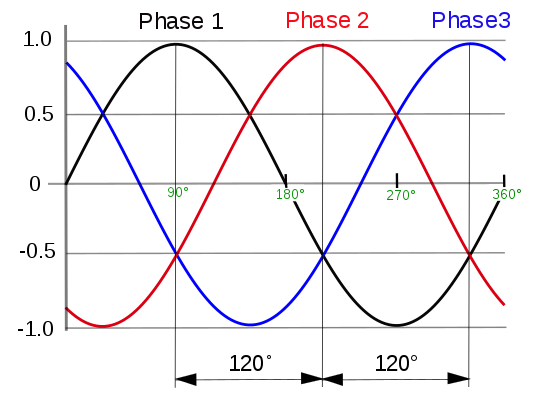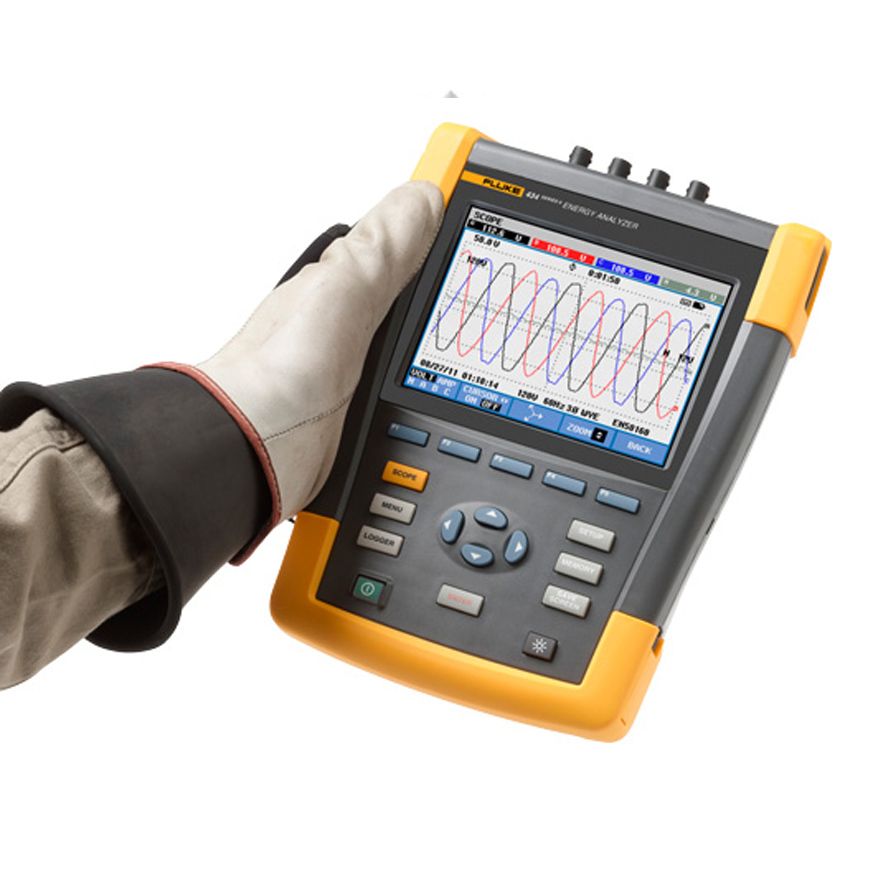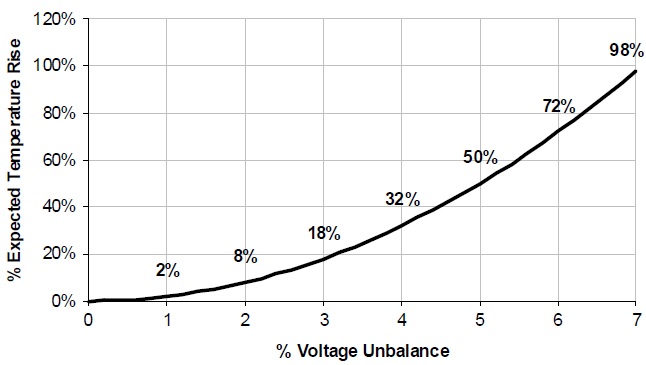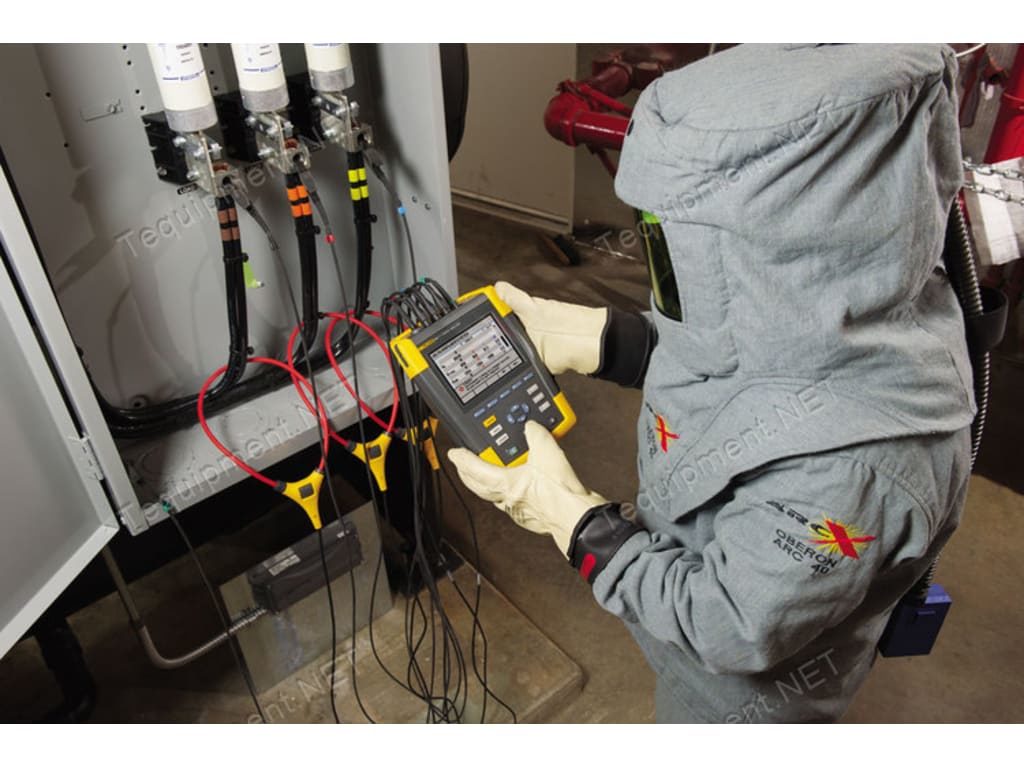Unbalance is a serious Power Quality issue affecting mainly low-voltage distribution systems in commercial and industrial facilities.
Voltage unbalance is responsible for low performance and shortens life span of three-phase motors among other consequences.
What then is voltage unbalance?
Voltage Unbalance
Voltage unbalance is the measure of voltage difference between the phases of a three-phase system.
When phases are out of phase and the amplitude of either the voltage or current are not equal or near equal, we say there is an unbalance.

Voltage unbalances at the motor stator terminals cause high current unbalance, which can be six to 10 times as large as the voltage unbalance.
Common causes of voltage unbalance include:
- Unbalanced transformer bank supplying a three-phase load that is too large for the bank
- Unevenly distributed single-phase loads on the same power system
- Unidentified single-phase to ground fault
- An open circuit on the distribution system primary
Current Unbalance
Unbalanced currents causes torque pulsation, increased vibration & mechanical stress, increased losses & motor overheating.
Voltage and current unbalance could also indicate maintenance issues such as lose connections and worn contacts.
High-quality Digital Multi-Meter (DMM) can be used to measure some basic phase-to-phase voltage unbalance. While a high-quality clamp meter can be used to measure phase-to-phase current unbalance.

Accurate, real-time unbalance measurement needs a three-phase power quality analyzer to enable solving unbalance problems.
Open circuits and single-phase to ground faults are easier to correct than load balancing, which typically requires corrective system-level design changes.
How Can Unbalance Be Mitigated?

To decrease the effects of unbalance, several actions can be taken, with different degrees of technical complexity.
The first and most basic solution is to rearrange or redistribute the loads in such a way that the system becomes more balanced.
For certain applications, there is a possibility of reducing unbalance by changing the operating parameters.
In order to reduce the influence of negative sequence currents, causing negative sequence voltage drops, on the supply voltage, a low internal system impedance is required. This may be achieved by connecting the unbalanced loads at points with higher short circuit level, or by other system measures to reduce the internal impedance.
Another type of mitigation techniques is the use of special transformers, such as;
- The ‘Scott-transformers’ consists of two single-phase transformers, with special winding ratios, hooked up to a three-phase system.
- A ‘Steinmetz-transformer’ is in fact a three-phase transformer with an extra power balancing load, consisting of a capacitor and an inductor rated proportional to the single-phase load.
Finally, special fast-acting power electronic circuits, such as ‘Static Var Compensators’ can be configured to limit the unbalance.
These behave as if they were rapidly changing complementary impedances, compensating for changes in impedance of the loads on each phase.
Also, they are capable of compensating unwanted reactive power. However, these are expensive devices, and are only used for large loads (e.g arc furnaces) when other solutions are insufficient.
Limits to unbalance
International standards (e.g. En- 50160 or the IEC 1000-3-series) gives limits for the unbalance ratio defined by (3) of <2 % for LV and MV systems and <1% for HV, measured as 10-minute values, with an instantaneous maximum of 4%.
More detailed standardization can be found in IEC 61000-2-x, as a part of EMC standardization, and EN 50160, describing the voltage characteristics at the Point of Common Coupling (PCC).
Next to this, different countries mostly European and electricity companies often employ their own additional role for the ‘emission’ of unbalance load currents.

At FullSpectrum Energy , we assist facilities and businesses remain competitive and profitable by resolving load unbalance(s) and keep businesses up and running seamlessly across all sectors.
Contact us



Victor Oyedu, FNSE, FNIEEE, CPQ.
Power Quality and Energy Management Specialist.
Publisher at Afrienergyonline.com
CEO, FullSpectrum Energy Solutions Limited, Nigeria.






